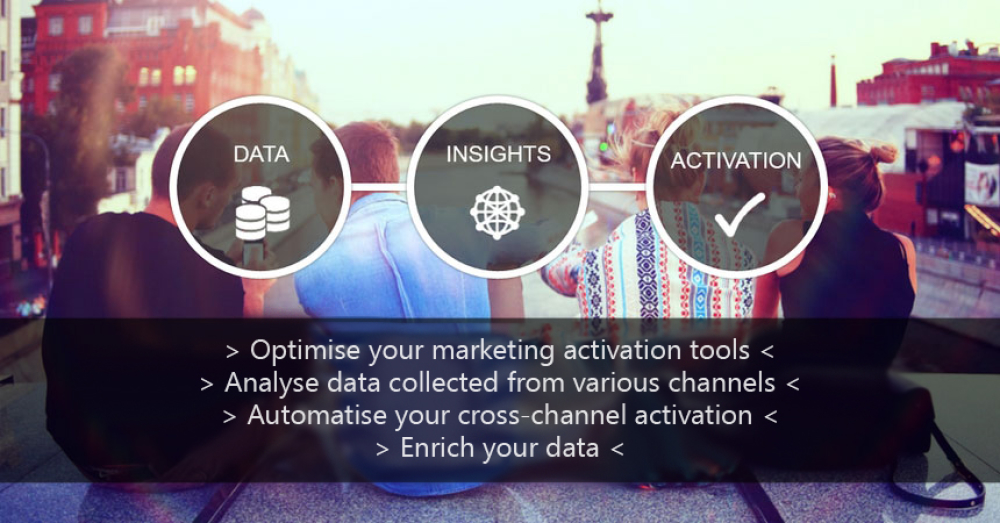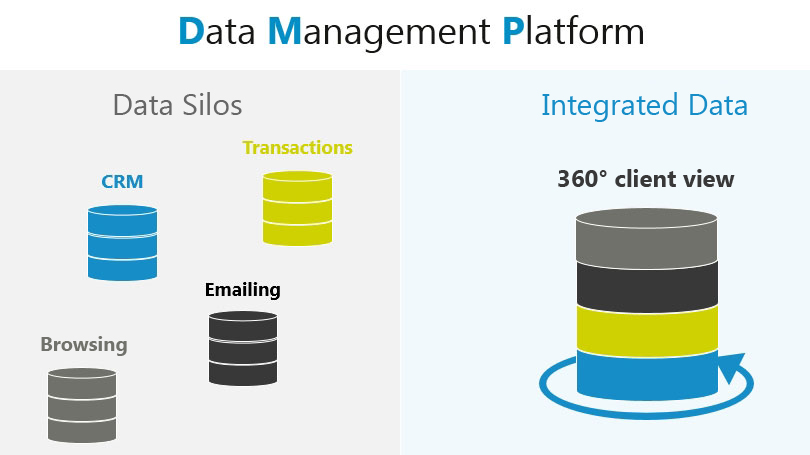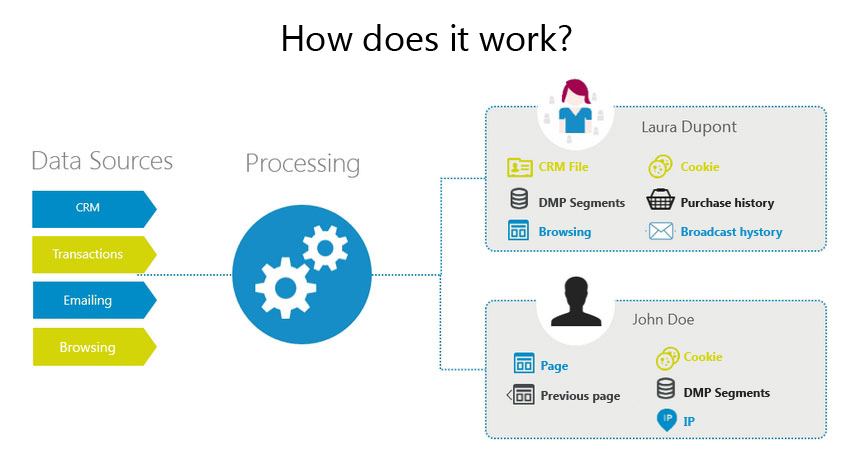DMP TO MARKETING AUTOMATION: HOW TO ACTIVATE DATA
19 Jul 2016

“Email is dead!” This is what we regularly hear since the rise of social media. However, today email plays a central part in customer relationship and remains a cost effective marketing tool used by almost every marketing professional. Of course volumes are decreasing but messages are becoming more qualified.
Fewer marketing emails are being broadcasted, which can be verified on other channels too such as display. To produce relevant and efficient campaigns, it is necessary to prioritise quality over quantity and to better target your broadcasts. This is where DMP comes into play to answer this question: “How to best manage marketing channel segmentation to better communicate?”
What is a DMP?
A DMP is an online Data Management Platform which collects, manages, analyses and activates large scale prospects data. In other words, it optimises data within targeted marketing campaigns. All this is done to address the following questions: How to centralise relevant data flux to reach my marketing goals? What is the most relevant data to aggregate?

DMP will finally integrate heterogeneous data coming from various channels (CRM, transactions, emailing, web browsing…) to gain a 360° view of your client within a unique repository.
The historical steps of DMP
It can be summarised in 3 steps:
- Contemplation: in the past, marketing professionals only had classic analytical tools to measure ROI and to provide a good but limited insight because it was too theoretical. Moreover, CRM remains static and requires data enrichment to better exploit an increasing amount of data.
- Structuration: new technologies appeared (Hadoop, Cassandra…) that enable processing of high volumes of heterogeneous data while offering less technical and user friendly interfaces, no longer the preserve of data scientists.
- Valorisation: this step started 5/6 years ago. It takes a lot of time because of the data activation’s technical challenge to plug into a heterogeneous ecosystem (DSP, CRM, CMS…). It is important to take into account complex indicators of marketing campaign results to comprehend KPI’s evolution in correlation to DMP usage.
What use to make of a DMP?
A DMP enables you to:
- Optimise activation of your marketing tools
- Analyse your data collected on various channels
- Automatise cross channel activation
- Enrich your data
How does it work?
DMP captures and aggregates all data sources (CRM, transactions, emailing, web browsing…) either through server-to-server connexions or through the use of tags.
This enables you to collect two types of information:
- Data from known customers (CRM customer file…) which will be enriched with other data that did not exist before (browsing behaviours…)
- Anonymous Data that did not exist in the CRM and to which we’ll attribute an identifier

DMP will enable the advertiser or the agency to create relevant segments corresponding to the current needs to activate the audience. DMP will also provide a more precise understanding of the audience by providing information on how it is composed and how to distribute it within the existing segmentation.
Scoring: what for?
Not the case at first, DMP now enables scoring. This technique provides the ability to carry out scoring to a particular client or prospect to evaluate its probability to answer a marketing solicitation or to belong to a target segment we want to reach.
There are two types of scoring: The status scoring (man/woman…) which enables to rationalise spending while limiting broadcast to the concerned targets. And the prediction scoring, enabling to optimise media spending: we buy if the price we think is right. It attempts at predicting a future action: this individual will click, open an email…
Scoring models appeared with the lookalike methodology which enables to identify individuals that are supposedly more interested by your products or services because they are similar to your customers. For example, after identifying specific browsing behaviours of a customer who finally purchases furniture on your website, and by comparing them to other visitors who did not purchase, we can attribute a score to each individual: Low, Average or High. We can therefore decide that only individuals with a High score will be specifically targeted for this type of furniture.
Predictive associated to email
As discussed, email is far from being dead and buried. It is even now used to feed and activate DMP, providing enormous amounts of data (click rate, opening rate…) and information about the recipient (out of office, delivery status notifications (Failure)…).
At their end, MSPs (Mail Service Providers) broadcast messages according to the appropriate potential and taking into account the behaviours of the targeted audience. An operator will therefore be able to block an address because no positive reactions have been detected for that particular target. It is important to optimise email campaigns using predictive marketing and scoring methods.
- Hourly potentiality scoring
This enables to send message at the right time for each target. Thus, the message has higher chances of being read when the individual accesses its messaging service. Note that potentiality scoring enables an increase in the opening rate but not necessarily the click rate.
- Reactivity and propensity scoring
These scores give the probability for an individual to positively react on the next communication. It enables to target segments with a high potential for reactivity and to take out those with a lesser potential. Please note that a target can have a positive reaction score but its propensity to react might be decreasing.
- Complaint and attrition scoring
These scores provide the probability for an individual to complaint or disengage. Complaints have a strong impact on deliverability and reputation (the more complaints decrease the more the reputation increases). It is therefore important to predict as much as possible. Moreover, the number of complaints also have an impact on the sending domain and increasingly on the brand itself (it is for instance taken into account by messaging protection system Vade Retro).
- Email retargeting
Linking your email router to a DMP enables to activate data onto the most targeted segments and to optimise marketing action triggers. Thus, someone visiting a product page on your website might trigger an email broadcast to offer him a promotion about the concern product. A new incentive email can be triggered (free shipping) if the prospect clicks the email but does not make the purchase.
It is also possible to trigger an abandoned basket email and then pushing a second email offer if the cart has still not been validated.
Questions before stepping into DMP
The deceptive side of DMP is real. Before stepping into such implementation to optimise your marketing campaigns, it is necessary to ask yourself the right questions to understand how DMP can assist.
- Marketing priorities: what are your short (1 year), medium and long (2 to 5 years) term priorities?
Make sure you analyse them thoroughly.
- Source identification: the potential evaluation is paramount to comprehend expected and possible benefits.
It is also very important to prioritise your sources.
- Use case: the consecutive step will be to identify the first concrete expected scenarios and potential benefits.
Then it will be necessary to verify how your DMP partner can respond.
By Laurent Garnier, Deliverability expert and Nicolas Messelet, Product Manager for NP6.

Please login to comment.
Comments